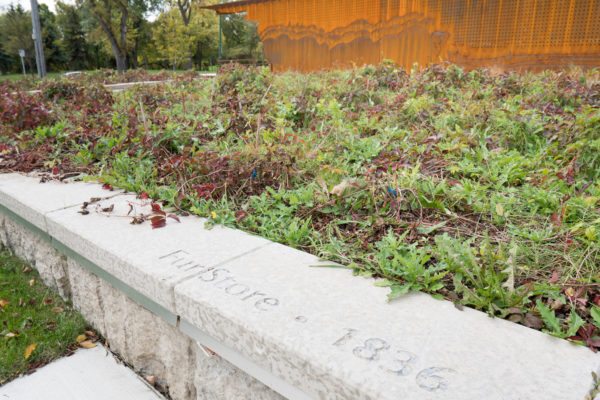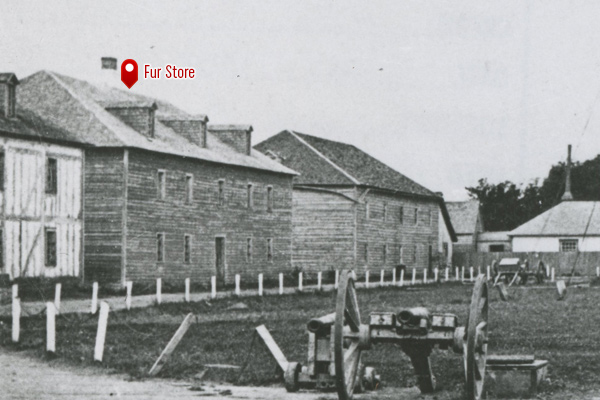The fur store was a two and a half storey post-and-beam building that measured roughly 72 by 32 feet and had a hip roof which peaked at 27 feet. Five gable windows looked out from the roof, facing the courtyard, meaning that the upper floor was likely intended as a workspace. Even so, the building went without a chimney until 1872, suggesting that it was only used as a workshop in summer.
The store was partially converted into barracks when the 6th Regiment of Foot arrived at Upper Fort Garry in 1846. Four rooms, each 15 feet by 30 feet, were created on each floor. Each room contained its own stove, mess table and chairs. Soldiers slept on rough beds and mattresses filled with locally made stuffing draped in HBC blankets. Fifty beds – neatly arranged with blankets and shirts folded on top – were placed on each floor.
Coutts, Robert and Diane Payment. The Forks of the Red and Assiniboine: A Thematic History, 1734-1850. Ottawa: Environment Canada, Parks Service, 1988.
Guinn, Rodger. The Red-Assiniboine Junction: A Land Use and Structural History, 1770-1980. Ottawa: Parks Canada, 1980.






